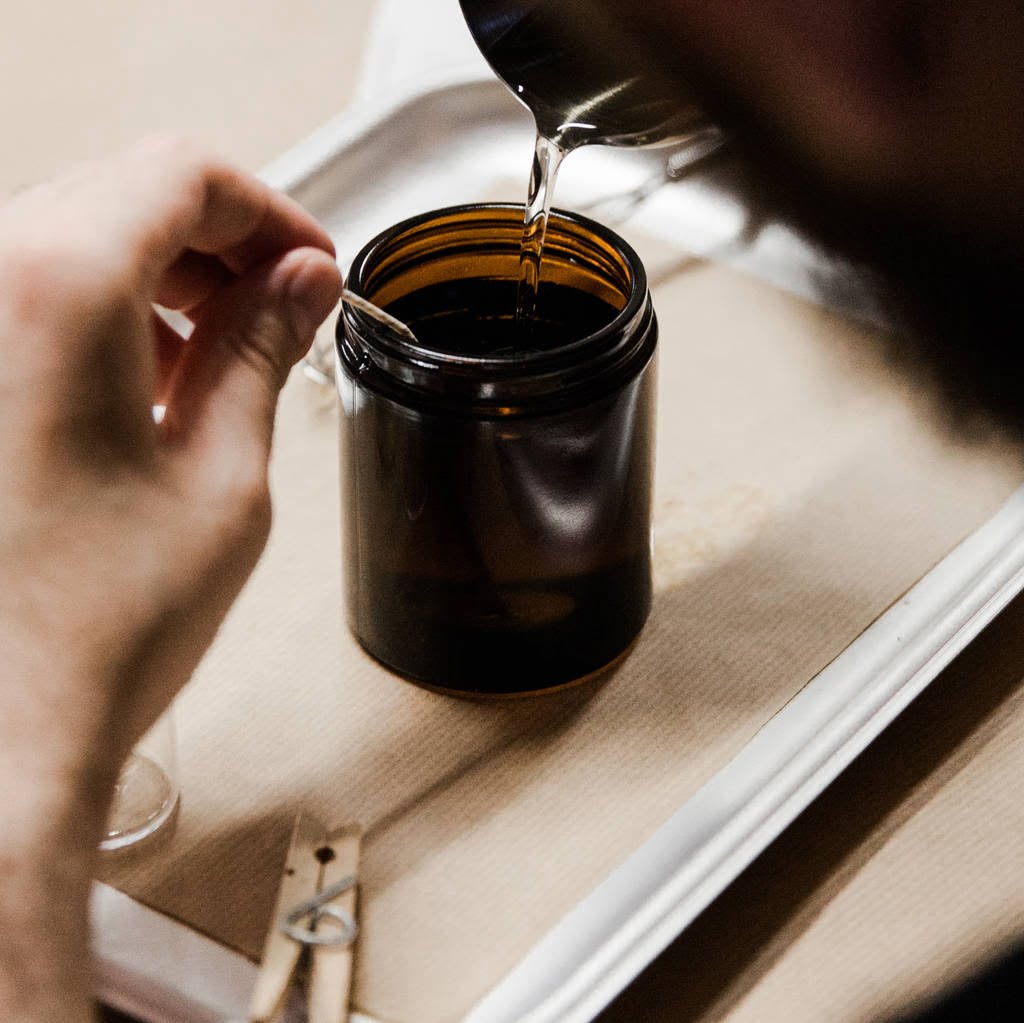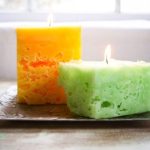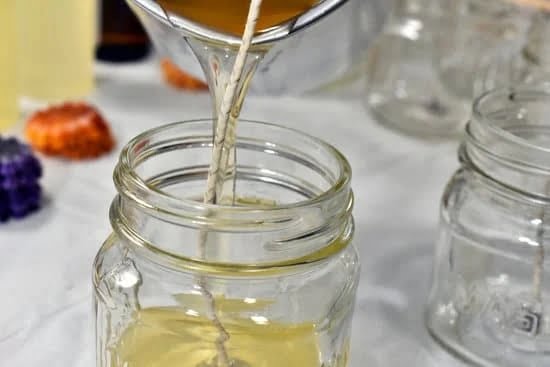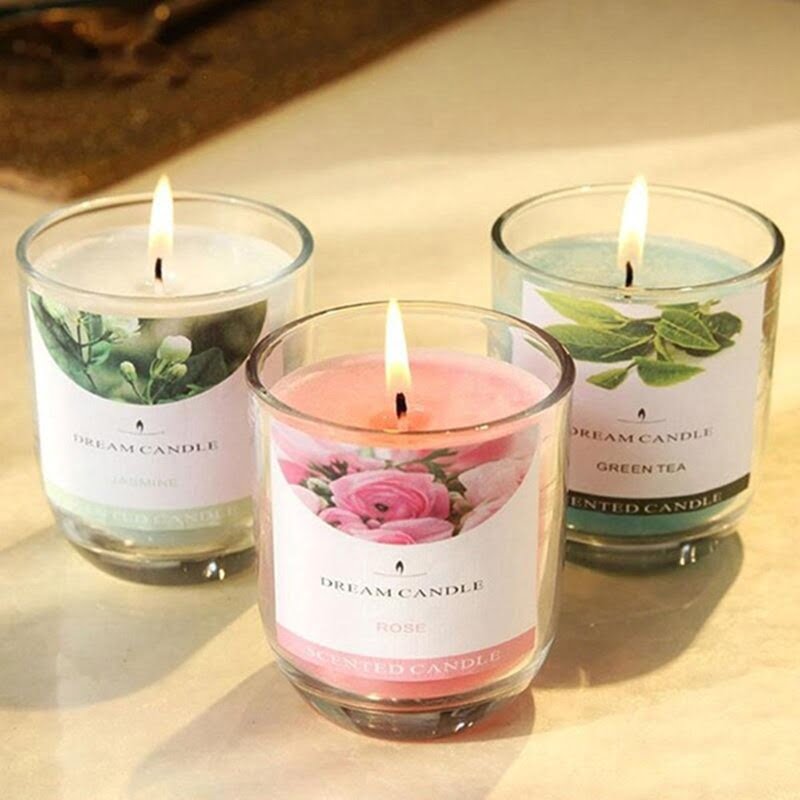Primitive candle making is a captivating craft that harks back to simpler times, evoking a sense of nostalgia and charm. In this article, we will delve into the world of primitive candle making, exploring its history, techniques, and unique beauty. Whether you’re a seasoned candle maker or someone interested in learning a new skill, join us on this journey as we uncover the artistry behind primitive candle making.
To truly understand primitive candle making, it’s important to grasp its essence. This traditional method involves using simple materials and techniques to create candles that are rustic yet exquisite in their own way. From hand-dipping to using natural waxes and wicks, primitive candle making celebrates the simplicity and elegance found in nature.
Throughout history, humans have utilized various methods to produce light from candles. Primitive societies relied on basic materials such as beeswax and tallow to craft their illuminating creations. These early techniques have evolved over time but still hold their timeless appeal. By delving into the history of primitive candle making techniques, we can gain a deeper appreciation for this ancient craft.
Join us as we explore the captivating art of primitive candle making. From understanding the materials needed to creating your own unique designs, this article aims to inspire creativity and illuminate the beauty found in traditional craftsmanship. Let’s embark on a journey through time and uncover the enchantment of primitive candle making together.
Materials Needed for Primitive Candle Making
Candle making is an ancient craft that has been practiced for centuries using various materials. In primitive candle making, traditional ingredients are utilized to create unique and eco-friendly candles. Here is a list of materials commonly used in this craft:
- Beeswax: Beeswax is one of the most popular choices for primitive candles. It is sourced from bees and has a natural golden color. Beeswax candles have a sweet, honey-like scent and burn slowly, emitting a warm glow.
- Soy Wax: Soy wax is another sustainable option for primitive candle making. It is a renewable resource made from soybean oil. Soy wax candles are clean-burning and have a longer burning time compared to traditional paraffin wax candles.
- Natural Wicks: Primitive candles often use wicks made from natural fibers like cotton, hemp, or wood. These wicks are free from additives and chemicals found in conventional wicks, making them safer for both humans and the environment.
- Fragrances: Essential oils or fragrance oils can be added to give your primitive candles a delightful scent. Choose natural essential oils derived from plants for an authentic touch.
- Colorants: If you want colored candles, consider natural dyes such as vegetable-based pigments or mica powders instead of synthetic dyes that may contain harmful chemicals.
When sourcing materials for primitive candle making, it is important to prioritize sustainability and eco-friendliness. Look for organic or locally sourced beeswax and soy wax that promotes ethical beekeeping practices and supports small-scale farmers. Similarly, opt for natural wicks that do not contain lead or other harmful substances.
In addition to these main ingredients, there are optional materials you may choose to enhance your candles:
By utilizing these traditional materials while prioritizing sustainability, you can create beautiful and environmentally friendly primitive candles that add warmth and ambiance to any space.
Materials for Primitive Candle Making
| Material | Description |
|---|---|
| Beeswax | Natural wax sourced from bees, known for its golden color and sweet scent. |
| Soy Wax | A renewable resource made from soybean oil, chosen for clean burning and longer burning time. |
| Natural Wicks | Wicks made from natural fibers like cotton, hemp, or wood to ensure a safer and more eco-friendly burning experience. |
| Fragrances (optional) | Addition of essential oils or fragrance oils to create scented candles. |
| Colorants (optional) | Natural dyes such as vegetable-based pigments or mica powders for coloring. |
Step-by-Step Guide to Primitive Candle Making
Preparing the Work Area and Gathering Necessary Tools
Before diving into the process of primitive candle making, it is important to set up a dedicated work area that is clean, well-ventilated, and free from any flammable materials. This could be a kitchen counter or a designated space in your crafting room. Take precautions such as laying down newspaper or wax paper to protect your surface from spills.
Next, gather all the necessary tools for primitive candle making. These include:
– Double boiler or an improvised setup with a heat-resistant container within a pot of boiling water.
– Thermometer to monitor the temperature of the wax.
– Measuring scale to accurately measure the amount of wax needed.
– Stirring utensils such as wooden sticks or metal spoons (dedicated solely for candle making).
– Safety equipment like gloves and safety goggles to protect yourself from hot wax.
Melting and Pouring the Wax Using Traditional Methods
Once your work area is set up and all the tools are ready, it’s time to start melting the wax. Depending on the type of wax you’re using, follow appropriate melting instructions. For example, if working with beeswax, cut it into smaller chunks for faster melting.
Ensure that you maintain a consistent temperature throughout the melting process by using a double boiler setup or an improvised one. Avoid direct heat sources that can cause rapid heating and potentially lead to dangerous situations.
Once your wax has reached its desired temperature, carefully pour it into your chosen containers or molds. This could range from vintage tea cups to repurposed mason jars or even handmade clay vessels for a more primitive feel. Allow sufficient time for the candles to cool and solidify before moving on to the next steps.
Adding Fragrance and Color Options for Primitive Candles
One of the appeals of primitive candles is their simplicity in terms of fragrance and color options. Traditional scents like lavender, sandalwood, or vanilla pair well with the rustic charm of these candles. Opt for natural fragrance oils or essential oils to maintain the eco-friendly nature of primitive candle making.
Similarly, subtly tinted candles in earthy tones or muted hues amplify the primitive aesthetic. Natural colorants like spices such as cinnamon or herbs such as dried lavender can be added to achieve the desired effect. Experiment and mix different colors and fragrances to create your own unique primitive candle designs.
By following these steps, you will be able to create your own custom primitive candles that exude a sense of simplicity and nostalgia. Whether you are a beginner or an experienced candle maker, this step-by-step guide will help you in your exploration of the beautiful craft of primitive candle making.
Traditional Candle Making Techniques from Around the World
Candle making is an ancient craft that has been practiced by cultures all over the world for centuries. Each culture has its own unique methods and techniques for creating candles, resulting in a diverse array of traditional candle making practices. In this section, we will explore some of these fascinating techniques from different parts of the globe.
One such technique is the Japanese art of washi candle making. Washi is a type of traditional handmade paper that is used to create intricate designs on candles. Artisans carefully cut and apply the washi paper to the surface of the candle, resulting in beautiful patterns when the candle is lit. These candles are often used in religious ceremonies or festivals in Japan and are considered to be a form of art.
In Africa, tribal communities have their own traditional candle making practices that have been handed down through generations. The Maasai people, for example, make candles using animal fat as their base material. They collect fat from animals and mix it with other ingredients such as beeswax or plant extracts to create colorful and fragrant candles. These candles play an essential role in Maasai traditions and are used for rituals, celebrations, and lighting.
In India, artisans practice a technique called Koodiyattam candle making, which involves molding wax into intricate shapes and designs. These candles are often made for religious purposes or as ceremonial gifts during festivals like Diwali. The process includes sculpting intricate details and motifs onto the surface of the wax using specialized tools. The resulting candles are not only functional but also serve as decorative pieces.
From East to West, North to South, traditional candle making techniques showcase the rich cultural heritage and artistic craftsmanship that exists around the world. Exploring these practices can not only deepen our understanding of different cultures but also inspire us to appreciate and embrace traditional crafts as a way to connect with history and preserve valuable cultural knowledge.
The Beauty of Primitive Candle Designs
The beauty of primitive candle designs is truly captivating. These candles offer a unique aesthetic that adds warmth, charm, and a touch of rustic elegance to any space. Primitive candle designs encompass various styles and techniques, allowing for endless creativity and customization.
One aspect that makes primitive candles visually appealing is their intricate carvings or textured surfaces. Craftsmen often engrave delicate patterns or motifs onto the surface of the candles, creating a visual feast for the eyes when these candles are lit. The flickering flame casts mesmerizing shadows through the carvings, enhancing the overall ambiance.
Another popular technique used in primitive candle making is adding texture to the outer layer of the candles. This can be achieved by rolling the warm wax in materials like dried flower petals, cinnamon sticks, or coffee grounds before it dries completely. As the candle burns down, these textured elements gradually reveal themselves, adding both visual interest and a delightful aroma to the surroundings.
Primitive candles also come in various shapes and sizes, giving them an artisanal quality distinct from mass-produced candles. Some craftsmen create long taper candles with hand-dipped techniques, resulting in subtle variations in thickness and texture along their length. Others mold beeswax into charming figurines or animals for a whimsical touch.
The beauty of primitive candle designs lies not only in their physical appearance but also in the nostalgic feelings they evoke. These handcrafted creations bring us back to simpler times when life was less complicated and more connected to nature. By incorporating primitive candles into our homes or events, we invite a sense of tranquility and authenticity that is often lacking in our modern lives.
Benefits of Burning Primitive Candles
The Natural and Health Benefits of Using Eco-Friendly Materials
One of the key benefits of burning primitive candles is the use of eco-friendly materials. Traditional candle making often utilizes natural ingredients like beeswax or soy wax, which are renewable resources. Unlike paraffin candles, which are derived from petroleum, these natural waxes burn cleanly without emitting harmful toxins into the air. This makes them a safer choice for both our health and the environment.
Beeswax, specifically, is known for its natural air-purifying properties. When burned, beeswax releases negative ions that attach to airborne pollutants such as dust, pollen, and mold spores, effectively reducing allergens in the air. Additionally, the soft golden glow emitted by beeswax candles creates a warm and cozy ambiance that can help alleviate stress and promote relaxation.
Creating a Cozy Atmosphere and Embracing Simplicity in Everyday Life
Primitive candles have a unique way of creating a cozy atmosphere that brings us back to simpler times. The soft flickering light offers a sense of tranquility and warmth that can transform any space into a calm sanctuary. By incorporating primitive candles into our lives, we can take a step back from the fast-paced world and embrace moments of stillness.
Burning primitive candles also encourages simplicity in everyday life. In this modern age filled with technology and constant stimulation, taking time to light a handmade candle by traditional methods allows for a pause in our busy schedules. It serves as a gentle reminder to slow down, appreciate the small joys in life, and find contentment in the simple pleasures.
Whether you’re seeking relaxation or wanting to create a serene environment at home, burning primitive candles provides numerous benefits beyond just their aesthetic appeal. By choosing eco-friendly materials and embracing simplicity through traditional candle-making techniques, you can elevate your well-being while adding an element of nostalgia to your daily routine.
DIY Decorative Ideas for Displaying Primitive Candles
Primitive candles have a timeless charm that can add warmth and rustic beauty to any space. Once you’ve made your own primitive candles using traditional methods, it’s time to think about how to display them in a way that enhances their natural appeal. Below are some DIY decorative ideas for showcasing your homemade primitive candles.
1. Rustic Candle Holders: Enhance the primitive aesthetic of your candles by placing them in handmade wooden candle holders. Look for reclaimed wood or branches with interesting textures and shapes. You can also carve or burn unique designs into the wood for added visual interest.
2. Mason Jar Lanterns: Repurpose old mason jars into charming lanterns by placing your primitive candles inside them. Decorate the jars with twine, burlap, or fabric scraps for a cozy and rustic touch. Hang these lanterns outdoors for a warm and inviting ambiance during summer nights.
3. Nature-Inspired Displays: Bring nature indoors by creating displays that incorporate natural elements like stones, pinecones, or dried flowers around your primitive candles. Arrange these items in a shallow tray or wooden bowl, arranging them artfully around the candles.
| Display Idea | Description |
|---|---|
| Rustic Candle Holders | Handmade wooden candle holders made from reclaimed wood or branches. |
| Mason Jar Lanterns | Repurposed mason jars decorated with twine or fabric to hold primitive candles. |
| Nature-Inspired Displays | Displays incorporating natural elements like stones, pinecones, or dried flowers. |
These DIY decorative ideas for displaying primitive candles are just a starting point. Get creative and let your personal style shine through as you experiment with different arrangements and materials. Remember, the goal is to enhance the natural beauty of your primitive candles while creating a warm and cozy atmosphere in your home.
Whether you choose to make your own candle holders or repurpose items from nature, showcasing your homemade primitive candles in unique and thoughtful ways will add a touch of rustic charm to any room. Embrace the simplicity and beauty of these DIY decorative ideas, and transform your space into a cozy haven that reflects the tradition of primitive candle making.
Modern Twists on Primitive Candle Making
In recent years, there has been a resurgence of interest in traditional crafts and practices such as primitive candle making. While the appeal of these age-old techniques lies in their simplicity and rustic charm, many contemporary candle makers have found ways to add modern twists to this ancient craft. By combining traditional methods with innovative ideas, they have created unique and exciting candles that appeal to a wide range of tastes.
One way that modern candle makers are updating primitive candle making is by incorporating luxury scents into their creations. While traditional primitive candles often relied on the natural scent of beeswax or other materials, today’s candle makers have access to a variety of fragrances that can enhance the sensory experience.
By blending essential oils or using high-quality fragrance oils, they can create candles that not only look beautiful but also fill the room with enticing aromas. Whether it’s a warm vanilla scent or a refreshing citrus blend, these modern twists on primitive candle making offer a luxurious touch to the traditional craft.
Another trend that has emerged within primitive candle making is the use of decorative elements to enhance the design. While traditional candles were often simple in appearance, contemporary candle makers are finding ways to incorporate unique textures and patterns into their creations.
From marble-like swirls on soy wax candles to hand-carved designs on beeswax, these decorative touches elevate the beauty of primitive candles and make them stand out as works of art. By experimenting with different techniques and materials, modern candle makers are pushing the boundaries of what is possible in this timeless craft.
Furthermore, some contemporary candle makers are exploring sustainable alternatives for traditional materials in an effort to make their products more eco-friendly. Many consumers today place great importance on sustainability and want their purchases to align with their values. In response to this demand, innovative companies have started using plant-based waxes like soy or coconut rather than conventional paraffin wax.
They also source natural wicks made from cotton or hemp, ensuring that their candles are free from harmful chemicals and additives. By embracing these modern twists on primitive candle making, crafters can create beautiful and sustainable candles that appeal to environmentally conscious customers.
Modern twists on primitive candle making showcase the versatility and adaptability of this ancient craft. By blending traditional techniques with contemporary ideas, candle makers are able to create unique, high-quality candles that cater to various preferences and needs.
Whether it’s through the use of luxury scents, decorative elements, or sustainable materials, these modern twists breathe new life into an age-old tradition and offer a fresh take on primitive candle making. So embrace the possibilities, get creative, and bring the charm of primitive candles into your modern world.
Conclusion
In conclusion, primitive candle making is a charming and significant craft that allows individuals to embrace tradition while also adding a rustic touch to their homes. By sourcing sustainable and eco-friendly materials, such as beeswax and natural wicks, primitive candle makers can create candles that not only provide a cozy atmosphere but also offer natural and health benefits.
Throughout history, traditional candle making techniques have been used by different cultures around the world. From Japanese washi candles to African tribal candles, each culture’s practices bring their own unique flavor to this craft. The beauty of primitive candle designs lies in their simplicity and the intricate carvings or textures that can be incorporated.
By incorporating primitive candles into home decor, individuals can create a warm and inviting atmosphere. Rustic candle holders and arrangements can add a touch of nostalgia and charm to any space. Additionally, contemporary candle makers are finding innovative ways to mix traditional techniques with modern design elements, offering luxury scents or decorative twists on this ancient craft.
As this article has explored, primitive candle making offers an opportunity for creativity and self-expression while also honoring tradition. Whether you choose to follow the step-by-step guide provided or put your own unique twist on the process, embracing the tradition of primitive candle making can be a fulfilling and rewarding endeavor. So why not explore this traditional craft for yourself and let your creativity shine?

Welcome to my candle making blog! In this blog, I will be sharing my tips and tricks for making candles. I will also be sharing some of my favorite recipes.





